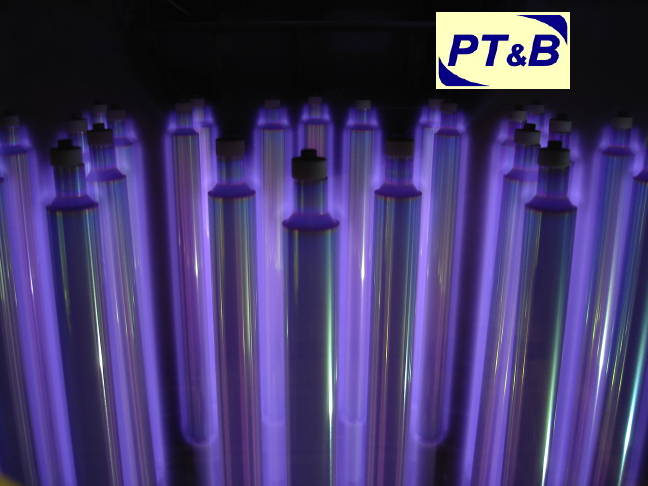Silicon Carbide
The Deposition of SilCor® Silicon Carbide
Silicon Carbide coatings brand SilCor® are deposited by means of plasma enhanced chemical vapor deposition (abbreviated PCVD, PECVD or PACVD). Gases used are hydrocarbons, silanes and inert gas. The electrical energy (either radio- or mid-frequency, rf or mf) is fed by plasma tools into the reaction chamber. Gas molecules are decomposed by electrons, which receive their energy from the electrical field within the plasma. The growth of the silicon carbide film results from the condensation of the molecular fragments onto the substrate (coating good). For a sufficient small amount of electrical energy, the temperature of the coating good can be kept as low as 40 deg Celsius. Therefore, even the most temperature-sensitive materials can be coated with SiC.
Two principle arrangements within in the vacuum chamber are realized: (1) is the so-called parallel plate geometry, which is, for example used for the coating of flat substrates of glass or ceramics. Glass substrates of 600 mm times 800 mm, thickness 15 mm have been coated with silicon carbide. (2) It is possible to use the major fraction of the volume of the STARON 100-120 deposition apparatus to coat a single part, i. e. maximum dimensions of the coating good are 1000 mm in length, 800 mm in diameter and 500 kg mass.
A special feature of the PCVD-technology developed by PT&B is the inner coating of bores and tubes with SiC. The key idea to realize inner coatings is to decrease the cathode dark space of the plasma below half the diameter of the tubes, So choosing the appropriate process parameters, inner surfaces of tubes down to 5 mm diameter are coated with silicon carbide.
Coatings goods of all plastic materials, ceramics and glass can be coated. Also most metals can be directly deposited with silicon carbide. In some special cases, however, it is necessary to start the process with an initial metal, adhesion-promoting layer.

Photo: View into a STARON PCVD deposition apparatus during the deposition process of mold cores made of aluminum. The silicon carbide (SiC) film applied to the cores prevents the sticking of plastic material onto the tools. The dark spaces close to the tools are clearly visible. In addition, the chatoyancy (changing colors) of the growing carbide film due to interference effects can be seen.